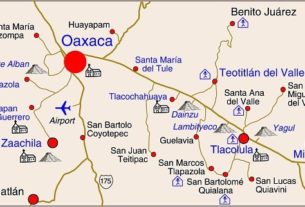Foreigners can opt to establish a Mexican company or to acquire stock in an already established Mexican company to do business within Mexico, depending upon the need to have a presence and involvement in Mexico from the commercial and tax point of view. The basic procedures related to the organization of a new Mexican company (hereinafter the “Company”) with 100% of foreign capital participation are as follows.
A. CORPORATE FORMS.
– The General Law of Commercial Companies (Federal Law) provides for several types of companies that can be organized and, depending on which form that is chosen, there are various differences in their legal and tax treatment.
a. Sociedad Anónima. It is usually recommended to incorporate a limited liability stock corporation (“Sociedad Anónima”), which may adopt the form of a fixed capital company (“S.A.”) or that of a variable capital company (“S.A. de C.V.”). The principal difference between the two is that the latter may increase or decrease its capital within the limits established in the By-Laws by a mere Stockholders’ Meeting resolution without the need to fulfill the formalities applicable to the S.A. Nevertheless, both types of companies must notify of any capital amendment to the National Registry of Foreign Investments and other applicable Government Agencies.
The key characteristics of both types of companies:
i. The shareholder’s liability is limited to their stock interest in the company and the directors are fully liable for the loyal and diligent administration of the company,
and
ii. Must have at least 2 (two) shareholders and a minimum capital of N$50.000.00, (Fifty Thousand Mexican Pesos), for which 20% (twenty percent) must be paid at the time of incorporation:
and
iii. Must appoint a statutory examiner who is a disinterested third party who supervises the operations of the company and represents the interests of the shareholders:
and
v. The shares which represent the capital stock of the company are freely transferrable and can be traded publicly, after the corresponding filings take place.
b. Limited Liability Company. Recently, another form of limited liability corporation, the “Sociedad de Responsabilidad Limitada” or “S. de R.L.”, has become popular among foreign companies that, in particular, want to reduce their tax liabilities in the U.S. Such a company is viewed for U.S. tax purposes as a partnership and the key characteristics are as follows:
i. Like a “S.A.” and “S.A. de C.V.”, the partners’ liability is limited to their partnership interest in the company and the directors will be fully liable for the loyal and diligent administration of the company: and
ii. It must have at least 2 (two) partners to a maximum of 50 (fifty), and a minimum capital of N$3,000.00 MexCy. (Three Thousand New Mexican Pesos), for which 50 % (fifty percent) must be paid at the time of incorporation: and
iii. There is no requirement to appoint a statutory examiner; and
iv. The tax rate will be the normal corporate tax rate of 34%. However, we understand that in the U.S. some of the tax advantages not available to the “S.A.” and the “S.A. de C.V.” include: (i) any start-up losses can be deducted on the tax returns of the investors in the U.S. and (ii) there is increased flexibility in allocating costs, and (iii) specific corporate and individual partners do not have to pay taxes on dividends a second time in the U.S.: and
v. The shares which represent the partnership interests in the company must not be freely transferrable and cannot be traded publicly.
c. General Partnership. Another form of business entity is the general partnership of the “Sociedad en Nombre Colectivo” ( the“SNC”.) This entity, if properly structured, will also have many of the same tax advantages as the “S. de R.L.” However, a distinct disadvantage of the “SNC” is that all of the partner(s) will have unlimited liability with respect to the obligations and debts. This corporate form is not frequently used in Mexico.
d. Limited Partnership. The limited partnership of the “Sociedad en Comandita Simple” ( the“SCS”) if properly structured, can also have many of the tax advantages of the “S. de R.L.” and the “SNC.” The “SCS” has two types of partners: the active partner(s) who have unlimited liability, and the silent partner(s) who are liable only for their capital contribution. This corporate form is also not frequently used in Mexico.
e. Mexican Branch. Another possibility for a foreign company is to operate through branch offices in Mexico. As foreign companies are legally recognized in Mexico, they retain their liability characteristics from abroad. However, to carry out business operations, such branches must be approved by the National Commission of Foreign Investments and Ministry of Foreign Relations, and be registered at the Public Registry of Commerce.
For tax purposes, the foreign company will receive the same treatment as a permanent establishment in Mexico (see above) and will pay taxes on the income generated from such branch offices at the normal corporate tax rate of 34%. However, the foreign company should be careful to avoid the possibility of having the income generated by the foreign company outside of Mexico to become attributable to the operations in Mexico. This possibility is due to the “force of attraction” rules contained in Mexico’s tax legislation, which will sometimes require a taxpayer to include in his taxable income, income generated from abroad.
f. Association in Participation. Although not a separate legal entity, the Association in Participation (“Asociación en Participación”) or (“AP”) is another common form of doing business “in” Mexico. Generally, an AP is an agreement in which one or more partners (“asociados”) give goods or services to a managing partner (“asociante”) in exchange for a right to participate in the profits of a commercial operation which is controlled by such a managing partner.
g. Joint Venture Agreement. Generally, a joint venture agreement is an association of persons (individuals or legal entities) for a limited period of time in which such persons jointly undertake a specific business enterprise. Although a joint venture agreement is sometimes mistakenly categorized only as an AP, a joint venture agreement can take many other forms. A joint venture agreement can take any form in which the parties agree to develop their business and agree to provide for their respective services and contributions of capital or resources, to the by-laws of a new independent company, or both.
The exact type of business venture that is to be undertaken determines the liability and tax treatment of such agreement.
B. STEPS FOR INCORPORATION.
– To establish a Sociedad Anónima or a Limited Liability Company (the two most common corporate forms), the steps will be essentially the following.
a. File for an Incorporation Permit for the company under a proposed name before the Ministry of Foreign Relations. For this two or three names are needed in order of preference. This authorization will take around two to three working days.
b. Incorporate the Company before a Notary Public. The Company’s initial capital must be paid in full if contributions are paid in kind, or it can be partially paid at a minimum of 20% if capital contributions are in cash. In the case of the “S. de R.L.”, the initial amount is 50%. The Company must issue registered share certificates, and the shareholders must be registered in the Company Stock Registry Book.
c. Concurrent with the incorporation the shareholders should hold a General Ordinary Shareholder’s/Partner’s Meeting resolving on: (i) the structure of the capital stock; (ii) appoint a Sole Administrator or a Board of Directors, as the case may be; (iv) appoint at least one “Examiner” (statutory auditor) to monitor the Company’s administration on behalf of the shareholders (In the case of the “S. de R.L.”) there is no requirement for an examiner: and (v) appoint a General Manager, and any other officers or agents.
d. The Sole Administrator or Members of the Board of Directors’ meetings may be held in or outside of Mexico. If the Sole Administrator or Directors are not Mexican citizens and will be acting in Mexico they will need a migratory permit.
e. The Examiner (in the case of a sociedad anónima) usually is an accountant from an accounting firm who regularly audits the Company. Also, an alternate Examiner could be appointed because this position cannot be delegated at will.
C. TIME FRAMES.
– Besides the obtainment of the prior approval from the Foreign Investments Authorities (if necessary), as indicated below, the incorporation date of the Company is dependent upon:
1). Drafting of the By-Laws to be used for the Company:
2) execution and formalization of the special powers of attorney to incorporate the new Company (if any),
3) the approval of the corporate name by the Ministry of Foreign Relations,
4) the obtainment of an appointment date by the Notary Public for signing the incorporation deed.
For purposes of this Presentation, we include in the concept of “Company” all legal entities incorporated pursuant to the commercial legislation of the Mexican Republic of the partnerships and associations established pursuant to the Civil Code of each State including Mexico. D.F. Equity participation in legal entities will be considered the shares, stock and corporate parts that represent the capital of a legal entity (hereinafter all referred to as “Stock”).
FOREIGN INVESTMENT UNDER NAFTA
Ratification of the NAFTA has encouraged greater investment in Mexico by (i) eliminating or reducing many existing barriers to foreign investment and (ii) establishing rules for the protection of foreign investors and their investments (NAFTA, Chapter 11).
A. ELIMINATION OF BARRIERS TO FOREIGN INVESTMENT.
– The NAFTA’s “National Treatment” obligation requires that the Governments of Canada, Mexico and the U.S. (the “Parties”) extend to investors of the other Parties (“NAFTA Investors”) treatment no less favorable than that enjoyed by the Party’s own investors (NAFTA, Art. 1102). Rules that discriminate against investors of the Parties, such as limits on foreign equity participation in certain industries, violate the national treatment obligation and therefore will be prohibited by the NAFTA.
However, each of the Parties has negotiated exceptions to the National Treatment obligation for sensitive industries (listed in Annexes I, II and III of the NAFTA). While Mexico has included the longest list of exceptions, it also has agreed to make the most changes in its foreign investment rules. For example, Mexico will gradually phase-out restrictions on foreign investment in the construction, auto parts, and mining industries (which are currently subject to maximum foreign investment of 34% or 49% respectively: and will allow NAFTA Investors to participate in industries that were previously reserved exclusively to Mexicans (e.g. commercial aviation, cable television, and surface transportation). In addition, Mexico has agreed to gradually lift a variety of restrictions on foreign investment in the financial services industry (see NAFTA, Chapter 14).
Mexico has agreed to change the policy with respect to the 49/51 Rule. In the former Foreign Investment Law, foreign investors were obligated to satisfy six (6) conditions or get special permission of the “National Commission of Foreign Investments” (“NCFI”) to invest in excess of 49% in unrestricted activities. Under the NAFTA, Mexico will only require to foreign investors to apply for the authorization from the NCFI to acquire existing Mexican companies if the value of their gross assets exceeds certain threshold (limit) amounts specified in Annex I of the NAFTA.
The thresholds (limits) applied to Canadian and U.S. investors are US$25 million for the first three years after NAFTA enters into force. US$50 for the next three years. US$75 million for the following three years, and US$150 thereafter (adjusted for inflation) (NAFTA, Annex I).
Otherwise, Canadian and U.S. investors will be free to establish 100% foreign owned subsidiares or invest up to 100% in existing Mexican companies with assets below the NAFTA thresholds (limits) without any restriction. On December 27, 1993 a new Foreign Investments Law was enacted.


